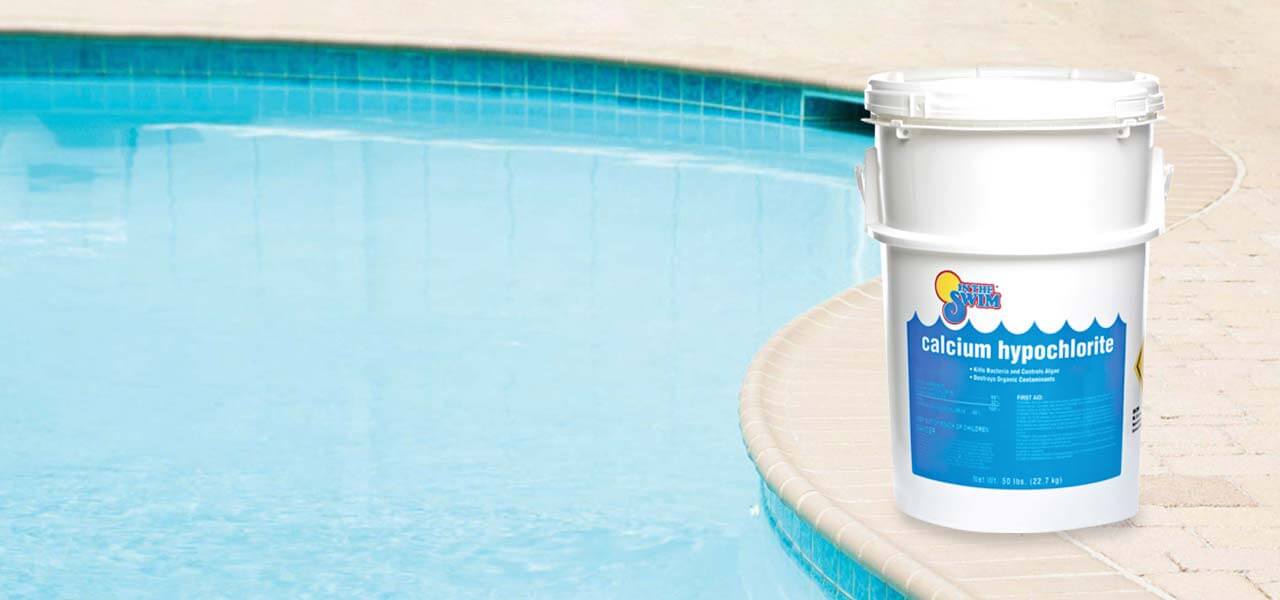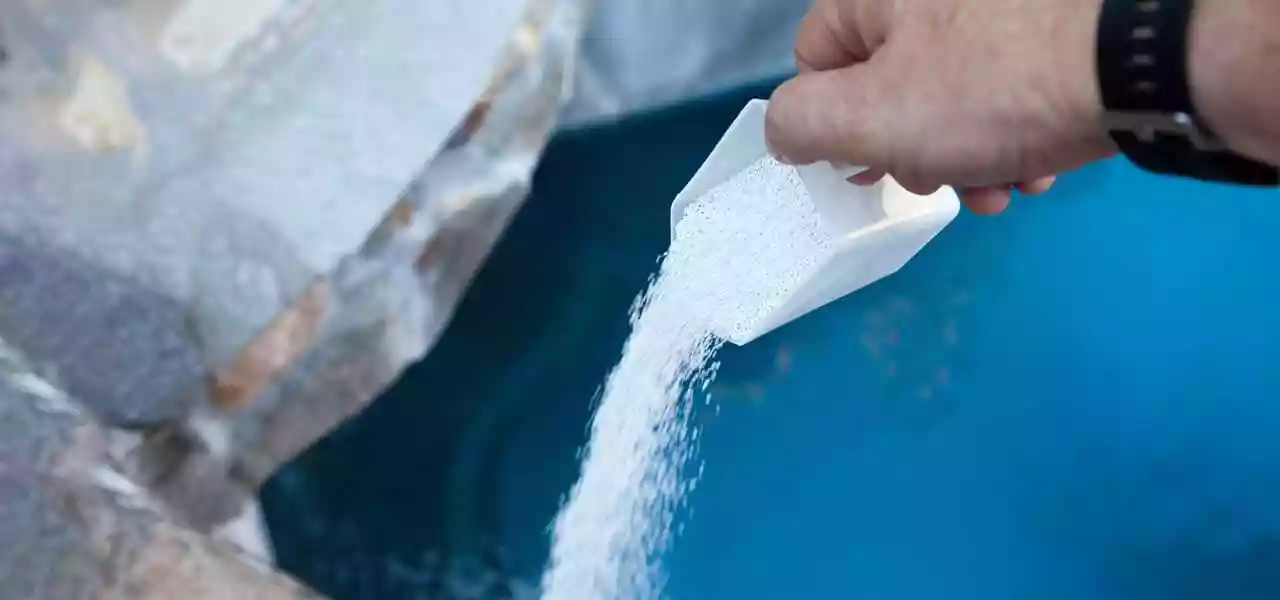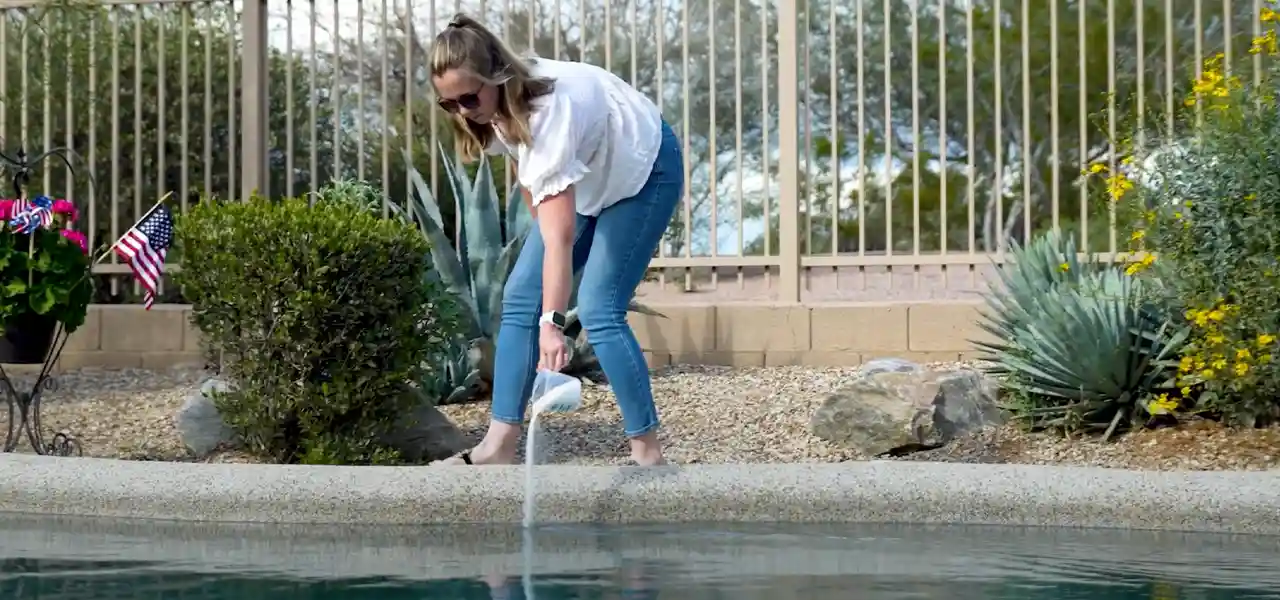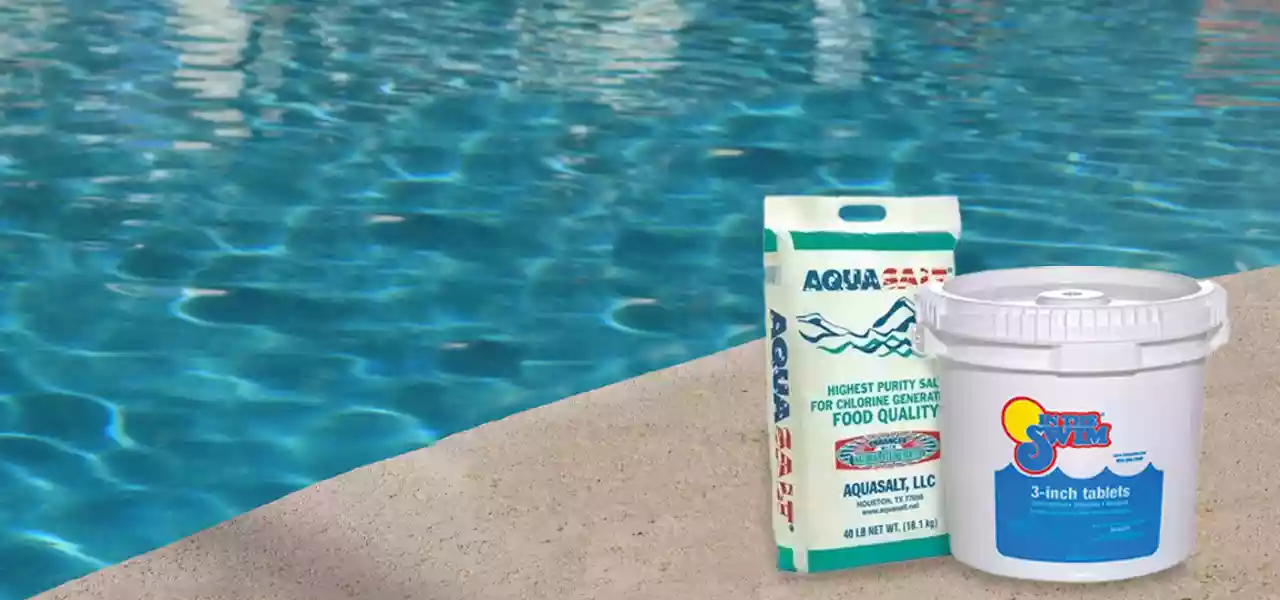It’s not too uncommon for your pool water to be slightly cloudy after shocking, especially if you use a granular chlorine shock. It typically takes about 24 hours for the granules to fully incorporate into the water and disappear. Most cloudy water issues after shocking should resolve within an hour or two. However, if 24 hours come and go, and you still can’t see the bottom of your pool, you likely have an underlying pool problem. Below are the 5 most common reasons why your pool water turns cloudy after a shock treatment.
1. High pH Level
The first possible reason why your pool is cloudy after shocking is because your pool has a high pH level. The stability of pH goes hand in hand with Total Alkalinity balance. These are arguably two of the most important elements of pool water chemistry. Low pH means your pool water is acidic, and high pH means it’s basic, or alkaline. An elevated pH level may cause calcium buildup and scaling in your pool, in addition to reduced chlorine efficacy, and consequently, cloudy pool water issues.
If your pool is cloudy after shocking, it could indicate your pool’s pH and Total Alkalinity are out of balance. Some pool shocks, like Calcium Hypochlorite, also known as cal-hypo, have an elevated pH level. Using this type of shock in a pool with an already increased pH level will usually lead to cloudy water problems.
Before shocking your pool with any type of chlorine shock (but especially cal-hypo), test the water chemistry and adjust the pH level to 7.2–7.4, which is slightly lower than the ideal range of 7.4–7.6. Lowering the pH with pH Reducer prior to shocking will keep the pH level balanced after the shock is added to your pool. Not only will this prevent cloudy pool water, but it will also increase the effectiveness of the shock. Just make sure to balance Total Alkalinity within the ideal range of 80–120 ppm before adjusting pH levels.
2. High Calcium Hardness Level
A high Calcium Hardness level is another possible reason why your pool water turns cloudy after adding shock. Calcium Hardness is the measurement of how much calcium is in your pool water. It’s most often a symptom of hard water sources. However, the type of pool shock you use can also impact levels.
One shock in particular impacts the Calcium Hardness level more than others. Can you guess which one? We’ll give you a hint: it’s in the name. If you guessed calcium hypochlorite, you’d be correct! A single 1-pound bag of cal-hypo adds about 5 ppm of calcium per 11,500 gallons of pool water.
If your pool’s Calcium Hardness level is already elevated above the recommended range of 200–400 ppm, you may want to use a sodium dichlor shock (Di-Zap) or sodium hypochlorite (liquid chlorine) to increase chlorine levels, or use a chlorine-free oxidizing shock whenever Free Available Chlorine levels are at 2.0 ppm or higher. These shocks don’t contain calcium and won’t affect your pool’s Calcium Hardness content. One thing to remember with dichlor shock is that it’s stabilized, meaning it adds Cyanuric Acid to the pool. If you’re already using stabilized chlorine as your primary sanitizer, such as 3″ trichlor tablets, or if your Cyanuric Acid levels are already high, you may want to consult with a pool professional about the best route for water management.
Test your pool’s Calcium Hardness level frequently, especially before shocking with cal-hypo. Lowering your pool’s Calcium Hardness level is not as easy as lowering the pH or Total Alkalinity levels. This requires dilution by partially draining and refilling the pool one foot at a time.
3. High Cyanuric Acid Level
The third possible reason why your pool is cloudy after shocking is because of a high Cyanuric Acid concentration. Also known as stabilizer or conditioner, Cyanuric Acid is a beneficial chemical to have in your pool. Cyanuric Acid acts as a “sunscreen” for chlorine, protecting it from breaking down under the sun’s harsh UV rays. However, an excess of Cyanuric Acid in your pool water does more harm than good. It can lead to ineffective chlorine and cloudy water after shocking.
Sodium dichlor shock uses stabilized chlorine, meaning it contains Cyanuric Acid. Test your pool water before shocking to determine the Cyanuric Acid level, and don’t use dichlor shock if the level is above the ideal range of 30–50 ppm. Instead, opt for unstabilized chlorine, such as cal-hypo, and/or chlorine-free shock when appropriate. Just like Calcium Hardness, the Cyanuric Acid level can only be lowered by diluting your pool water with a partial drain and refill.
4. High Levels of Contaminants in the Pool
Having a hard time maintaining ideal chlorine levels in the pool? That’s a dead giveaway that you’re dealing with serious water contamination. When you shock the pool to increase chlorine levels, but the water turns cloudy and the chlorine level is back at near-zero within a day or two, you may need to double or triple shock the water to eliminate all the organic contaminants in the water. This is most common after a storm (which brings in contaminants and changes pH levels), during periods of high temperatures, after increased pool usage or a pool party, or when your pool is in the early stages of an impending algae bloom. If all other aspects of your water chemistry are balanced, you may just need to add more shock to the pool.
5. Poor Water Circulation and Filtration
Chemical blunders aren’t always to blame when your water turns cloudy after shocking. Sometimes it’s your pool equipment that’s to blame! Poor or insufficient water circulation prevents the shock from properly incorporating into the water, or your filter can’t easily remove microscopic contaminants, both of which can lead to cloudy water.
Picture someone pouring sugar into a glass of still, standing water. If they stir the water after adding the sugar, the sugar disappears. But if they don’t move the water at all after adding the sugar, the water gets cloudy. The same thing happens to your pool if you don’t circulate the water after adding chemicals.
Run your pool pump for at least one full turnover (about 8 hours or more) every day, or longer if you are doing multiple rounds of shock. Clean out the pump strainer and skimmer baskets often, and check the pressure gauge on your pool filter to monitor when your filter is due for cleaning or backwashing. If your filter media is past its prime, consider replacing it to maintain filtration efficiency. If your pool is filled with microscopic contaminants, and your filter can’t efficiently remove them from the water, you may notice increased cloudiness after shocking the pool.
Check out our post, “Pool Filter Troubleshooting Guide,” for more information on common filter problems and fixes.
Pool shock is a valuable part of maintaining your pool’s health and clarity. Routinely superchlorinating your pool neutralizes contaminants and bacteria, but can also uncover underlying pool problems. If your pool is cloudy after shocking, first test the water chemistry for any imbalances, and check your equipment for any issues. Finally, make sure you’re shocking your water with a high quality, fast-dissolving pool shock. Lower quality products take longer to integrate into the water, making the water appear cloudy.




